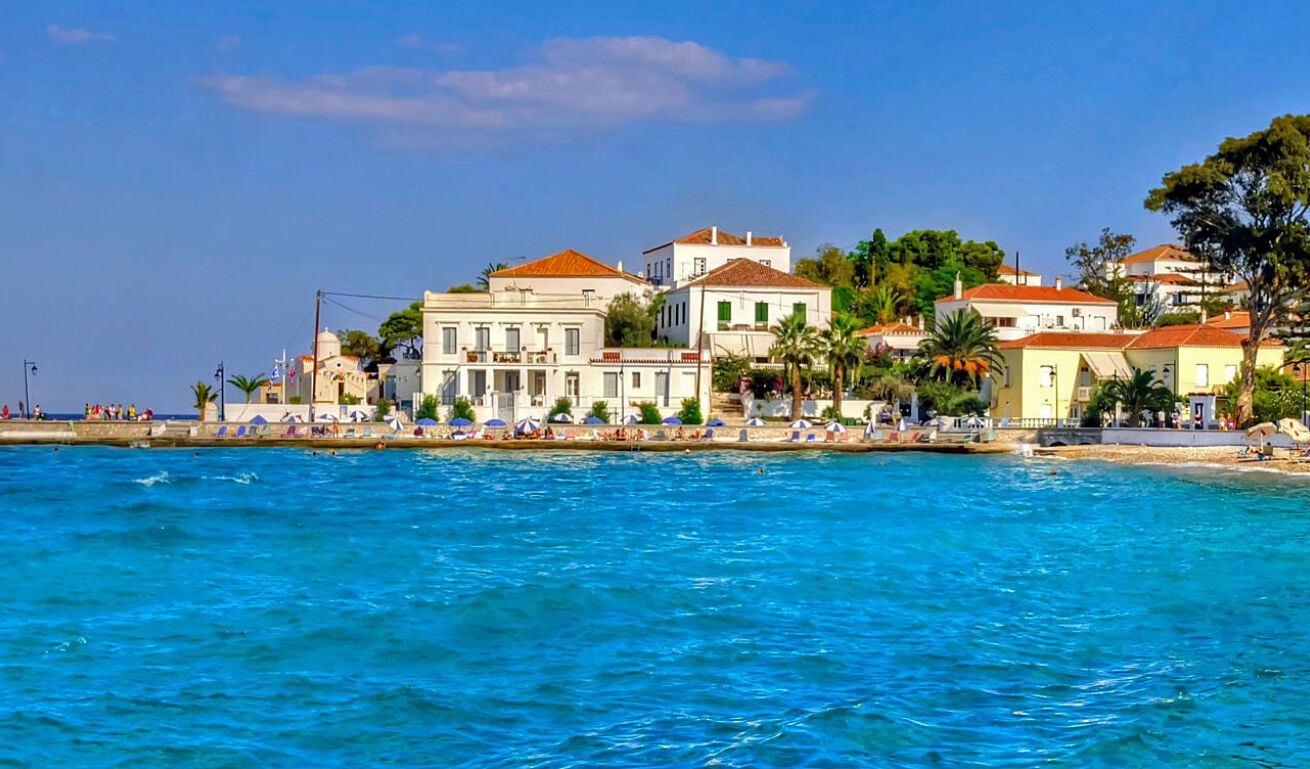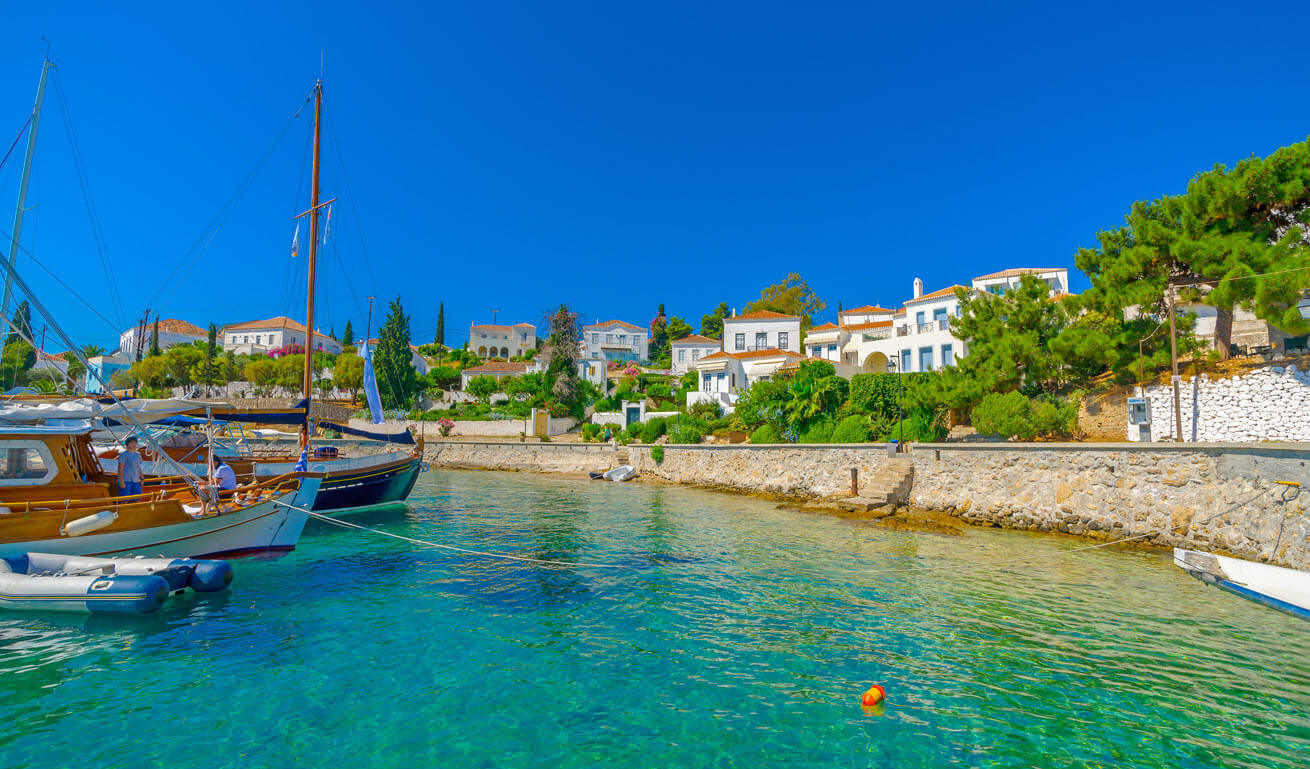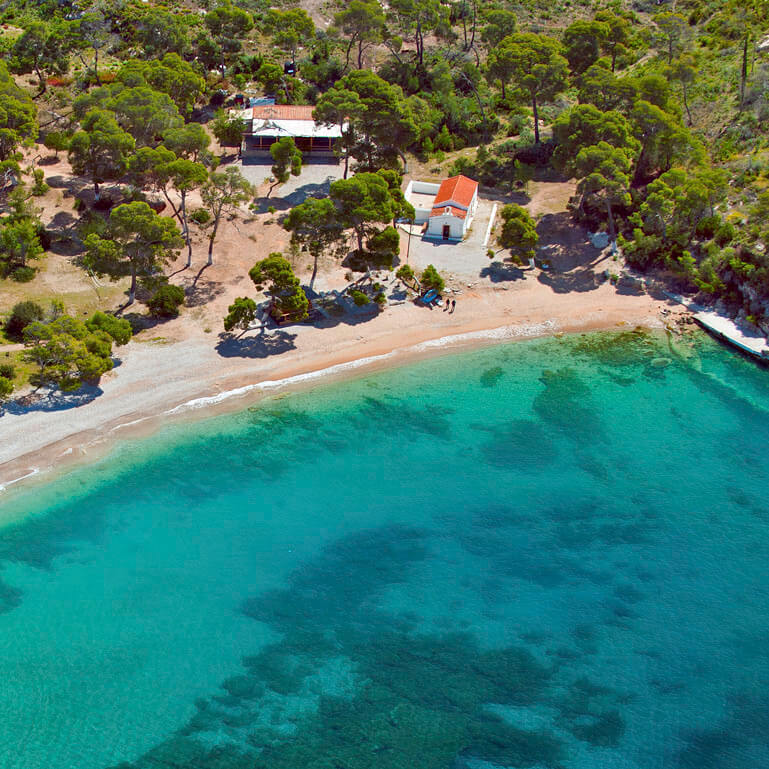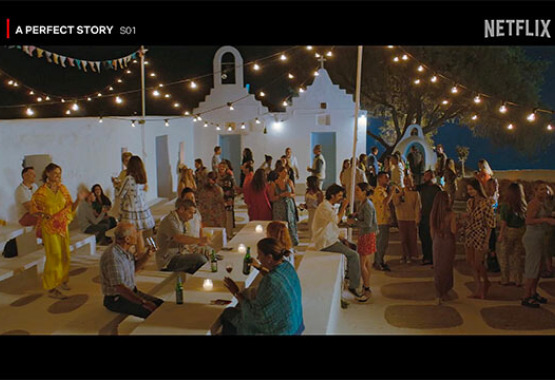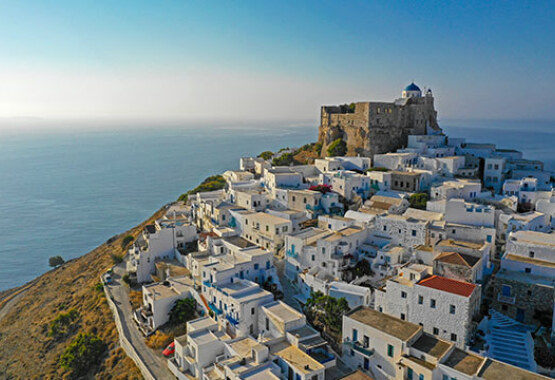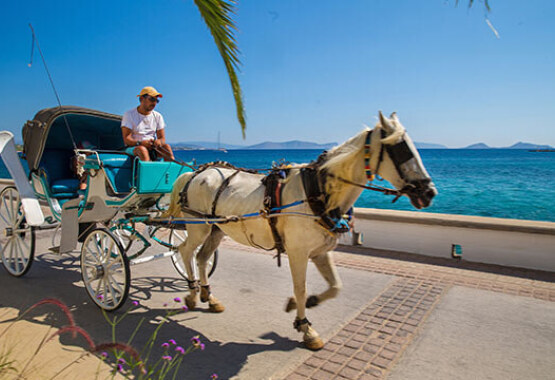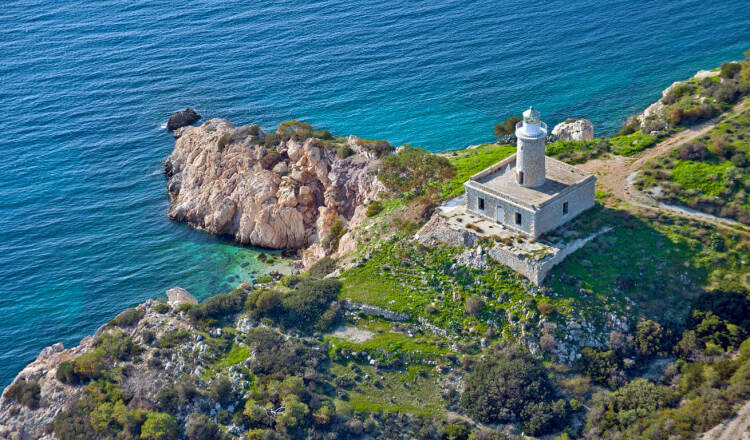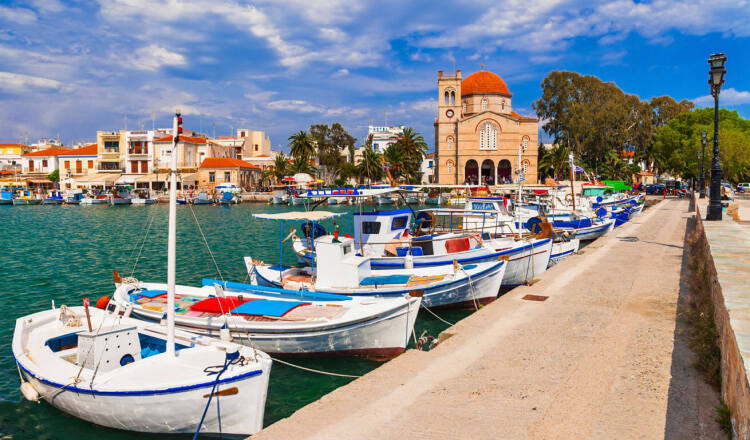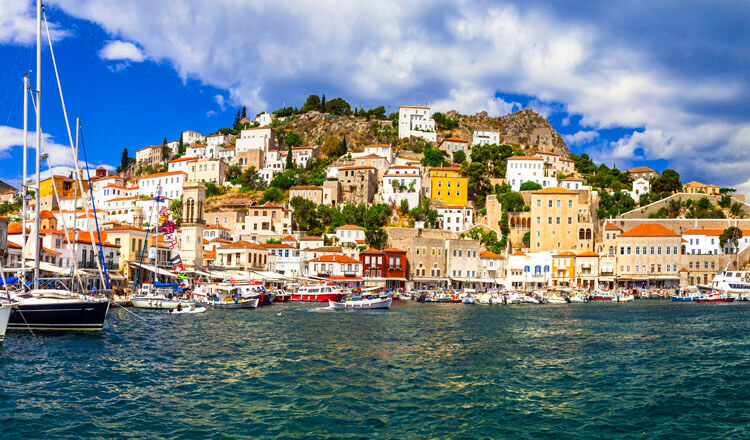Spetses is the perfect place to enjoy a wonderful walk as the distinctive architecture, cobble streets and fragrant gardens filled to the brim with jasmine and bougainvillaea make it a joy to discover the island on foot.
Start your walk in the main port of Dapia where the imposing and magnificent Poseidonion Grand Hotel. The hotel was first built in 1914 and was the brainchild of Sotirios Anargyros, in the style of the Negresco Hotel in Venice and the Carlton in Cannes. It was completely renovated in 2009, with special attention to the architectural fixtures of the building and has since won an impressive array of international awards. The locals refer to it as “our acropolis”.
A couple of minutes from the hotel is the house of Sotirios Anargyros built in 1904. The mansion is guarded by two Egyptian sphinxes – an exotic note rarely seen in a Greek island. A little way off from the Mansion of Anargyros is the Bouboulina Museum. Lascarina Bouboulina is one of the few female heroes of the Greek Revolution and notably one of the most renowned women in the history of Greece.The museum is housed in the home of Bouboulina, and displays a collection of personal objects and memorabilia. The building itself is noteworthy for its architectural details, especially the intricately carved wood ceiling in the main salon.
Another Museum a little further off from Dapia, is the Xatzigiannis- Mexis Museum, which is housed in the superb mansion of Hatzigiannis Mexis, one of the notables who played a leading part during the fight for Greek Independence. The first floor is the one open to the public and displays a collection of relics and objects depicting the island’s history and culture from the Classical period to the beginning of the 20th century. Sculptures, Roman coins, Byzantine icons, local costumes, embroideries, portraits, historical documents and weapons are amongst the permanent collection of the
After perusing the memorabilia of the Mexis collection, we suggest a stroll from Dapia to the Old Harbour (Palio Limani), via the coastal route. It is approximately 2 km, but well worth it. Along the way, marvel at the Captain’s mansions, perched high from the cobbled road and surrounded by beautiful gardens with intricate stone patterns (dolphins and anchors being the favourite designs). From the coastal road a short path leads to the Monastery of Saint Nicholas which was built approximately in the beginning of the 18th century. Tradition has it that during a storm wives and mothers of sailors would take oil from the monastery and pour it in the sea to calm the waters ensuring the safe return of their loved ones. When in 1821 the Greek revolution broke out, Spetses was the first of the Greek islands that raised the flag of the Revolution the morning of April 3rd 1821, in the patron saint church of St. Nicholas, located in the old harbour. Every year, the second weekend of September is dedicated to commemorating the events of the battle of Sept. 8, 1822, in which the Turkish flotilla was torched. The events culminate with a re-enactment of the burning of the Turkish flagship in the harbour. Even today, most traditional fishing boats and sea taxis hoist the blue and red flag of the revolution. The blue signifies freedom and the red signifies blood, along with the words, “Freedom or Death” .
Continuing along the coastal road, one reaches the traditional Spetses shipyards, which are the only ones in Greece that have been in operation constantly since the revolution until this day. The shipbuilding tradition of Spetses is unequalled in the Mediterranean with the craft being carried down from generation- at the moment only five remaining shipyards are in operation and it is a pleasure to watch the craftsmen at work. The wood is soaked in sea water for durability and all the materials used follow the traditional way of boat building.
After the shipyards, it is a short walk to the lighthouse on the tip of the Old Harbour (Palio Limani). The lighthouse is one of the oldest in Greece (it was built in 1837) and is still in operation. In the gardens around the lighthouse, sculptures of renowned artist Natalia Mela, decorate the tip of the island.
Finally, we also suggest a walk towards the other side of the island as well, in order to visit the famous Anargyreios & Korgialeneios School, also built by Sotirios Anargyros in 1927. It functioned as a boarding school until 1983, based on the famous British schools of Eton and Harrow and was the inspiration behind the John Fowles Novel “The Magus'' who was a professor at the school. Nowadays, the neoclassical building is still used for congresses and cultural/historical meetings.
If walking is not your thing, you can take a romantic trip around the island in horse-drawn carriages and admire the grand mansions adorning the narrow cobbled streets of the island.


